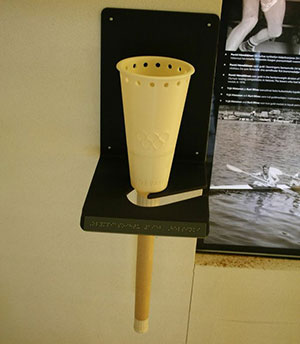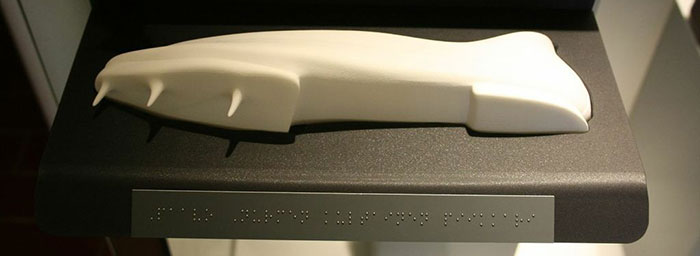“An alternative display case” or, in Finnish, “Vaihtoehto vitriinille”, is a collaborative project between the Sports Museum of Finland and local 3D printing and scanning service Versoteq. Their idea is simple and yet poignant: to display 3D printed copies of items in the museum’s collection for the public to touch and feel.
This is not the first such project but it is always fascinating to see how 3D printing has made the old saying “you can look but you can’t touch” obsolete. This is particularly true in the case of valuable works of art, that can be made available for the local public to physically interact with and for the more remote public to duplicate and appreciate locally.
The Smithsonian’s X3D project, in collaboration with Autodesk, is centered on 3D scanning and is one of the main examples of the second kind of “augmented fruition”, that is making valuable cultural artefacts available everywhere. The Versoteq project, on the other hand, is more focused on the possibility for local museum visitors to touch the objects they have come to see.
This becomes particularly important in terms of accessibility for those who cannot see, or actually do see but through their sense of touch. By being “physical”, 3D printed objects give people with visual disabilities the possibility to experience the museum’s collection by touch. In fact a few months ago we covered the possibilities that 3D printing opens to the blind in a project titled “The Form of Scents”, by 3D printing and design studio Growthobjects.
With funding form the Finnish Ministry of Education and Culture, Versoteq 3D modelled and 3D printed precise duplicates for anyone to touch, while other “past” technologies, such as mobile phone guides and indoor tracking, have contributed to make the museum accessible to as many people as possible.
Some of the first models created include the Olympic torch used for the Helsinki Olympics, long distance runner Paavo Nurmi’s gold plated running shoe, ski jumper Matti Nykänen’s gold medal and Pertti Karppinen’s row boat, as well as a bone ice-skate from the eighteenth century and a bicycle from the nineteenth century. A model of Helsinki’s Olympic Stadium is also part of the “3D pintxhibit”.
Versoteq will be present at the museum to demonstrate 3D printing technologies to the public, starting with FDM. ”Our objective is to bring the benefits of these new technologies to everybody,” said Petja Kärki, the CEO of Versoteq. And everybody means full accessibility to all.




